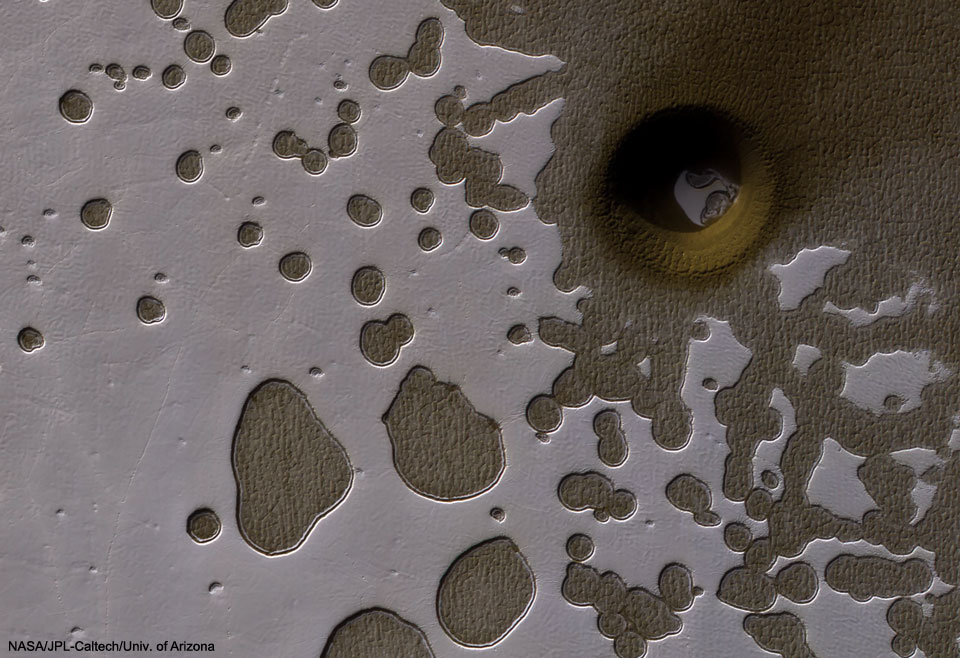more »
The newest class of astronauts will learn how to spacewalk in a 60-foot-deep pool, and learn to speak Russian to better communicate with cosmonauts.
via New York Times
There are advances being made almost daily in the disciplines required to make space and its contents accessible. This blog brings together a lot of that info, as it is reported, tracking the small steps into space that will make it just another place we carry out normal human economic, leisure and living activities.
Monday, 12 June 2017
ALMA hears birth cry of a massive baby star
more »
Astronomers have determined how the enigmatic gas flow from a massive baby star is launched. The team used ALMA to observe the baby star and obtained clear evidence of rotation in the outflow. The motion and the shape of the outflow indicate that the interplay of centrifugal and magnetic forces in a disk surrounding the star plays a crucial role in the star's birth cry.
via Science Daily
Zazzle Space Exploration market place
Astronomers have determined how the enigmatic gas flow from a massive baby star is launched. The team used ALMA to observe the baby star and obtained clear evidence of rotation in the outflow. The motion and the shape of the outflow indicate that the interplay of centrifugal and magnetic forces in a disk surrounding the star plays a crucial role in the star's birth cry.
via Science Daily
Zazzle Space Exploration market place
An Unusual Hole in Mars
more »

What created this unusual hole in Mars? Actually, there are numerous holes pictured in this Swiss cheese-like landscape, with all-but-one of them showing a dusty, dark, Martian terrain beneath evaporating, light, carbon-dioxide ice. The most unusual hole is on the upper right, spans about 100-meters, and seems to punch through to a lower level. Why this hole exists and why it is surrounded by a circular crater remains a topic of speculation, although a leading hypothesis is that it was created by a meteor impact. Holes such as this are of particular interest because they might be portals to lower levels that extend into expansive underground caves. If so, these naturally-occurring tunnels are relatively protected from the harsh surface of Mars, making them relatively good candidates to contain Martian life. These pits are therefore prime targets for possible future spacecraft, robots, and even human interplanetary explorers.
Zazzle Space Gifts for young and old

What created this unusual hole in Mars? Actually, there are numerous holes pictured in this Swiss cheese-like landscape, with all-but-one of them showing a dusty, dark, Martian terrain beneath evaporating, light, carbon-dioxide ice. The most unusual hole is on the upper right, spans about 100-meters, and seems to punch through to a lower level. Why this hole exists and why it is surrounded by a circular crater remains a topic of speculation, although a leading hypothesis is that it was created by a meteor impact. Holes such as this are of particular interest because they might be portals to lower levels that extend into expansive underground caves. If so, these naturally-occurring tunnels are relatively protected from the harsh surface of Mars, making them relatively good candidates to contain Martian life. These pits are therefore prime targets for possible future spacecraft, robots, and even human interplanetary explorers.
Zazzle Space Gifts for young and old
Solar power to Mercury
more »

Space Science Image of the Week: BepiColombo’s carrier craft unfolds its solar wings
via ESA Space Science
http://www.esa.int/spaceinimages/Images/2017/06/Mercury_Transfer_Module_solar_wing_deployment
Space Science Image of the Week: BepiColombo’s carrier craft unfolds its solar wings
via ESA Space Science
http://www.esa.int/spaceinimages/Images/2017/06/Mercury_Transfer_Module_solar_wing_deployment
Graphene electrodes offer new functionalities in molecular electronic nanodevices
more »
An international team of researchers has revealed a new way to tune the functionality of next-generation molecular electronic devices using graphene. The results could be exploited to develop smaller, higher-performance devices for use in a range of applications including molecular sensing, flexible electronics, and energy conversion and storage, as well as robust measurement setups for resistance standards.
via Science Daily
An international team of researchers has revealed a new way to tune the functionality of next-generation molecular electronic devices using graphene. The results could be exploited to develop smaller, higher-performance devices for use in a range of applications including molecular sensing, flexible electronics, and energy conversion and storage, as well as robust measurement setups for resistance standards.
via Science Daily
New form of carbon that's hard as a rock, yet elastic, like rubber
more »
Carbon is an element of seemingly infinite possibilities. This is because the configuration of its electrons allows for numerous self-bonding combinations that give rise to a range of materials with varying properties. A team of scientists has developed a form of ultrastrong, lightweight carbon that is also elastic and electrically conductive. A material with such a unique combination of properties could serve a wide variety of applications from aerospace engineering to military armor.
via Science Daily
Carbon is an element of seemingly infinite possibilities. This is because the configuration of its electrons allows for numerous self-bonding combinations that give rise to a range of materials with varying properties. A team of scientists has developed a form of ultrastrong, lightweight carbon that is also elastic and electrically conductive. A material with such a unique combination of properties could serve a wide variety of applications from aerospace engineering to military armor.
via Science Daily
Subscribe to:
Comments (Atom)